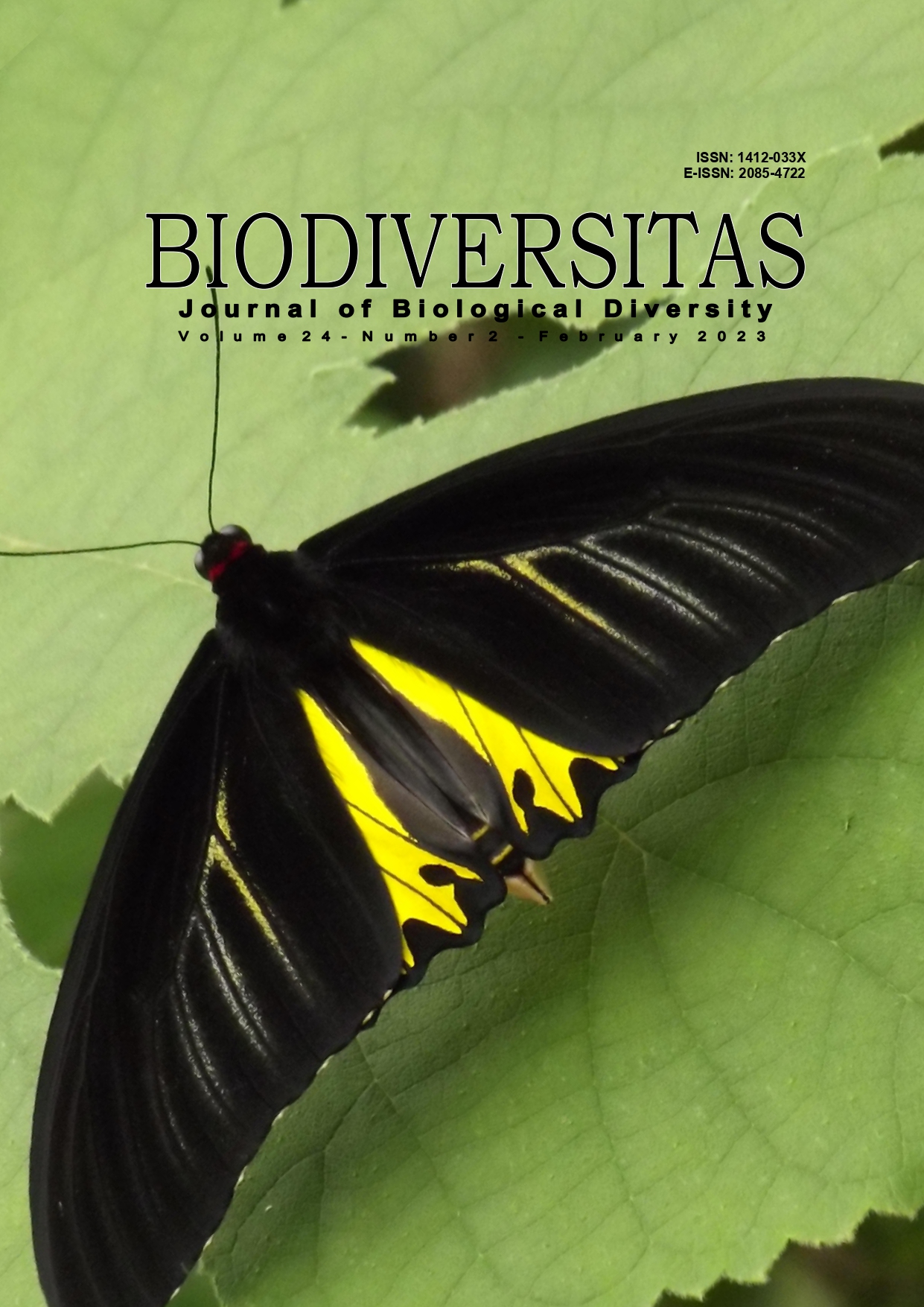The effects of flowering trap crops on diversity and longevity of pollinator insect visitation on chili plants
##plugins.themes.bootstrap3.article.main##
Abstract
Abstract. Aminatun T, Budiwati, Rahmawati YF, Widiyanti DN, Fahdah LA. 2023. The effects of flowering trap crops on diversity and longevity of pollinator insect visitation on chili plants. Biodiversitas 24: 887-893. Red chili (Capsicum annuum) is a significant agricultural commodity with flowerage and fruit quality affected by pollinator insect visitation. However, research on the effect of flowering trap crops on the diversity and visitation of pollinator insects in chili has never been investigated. Therefore, the study aimed to analyze the effect of flowering trap crops on the visitation of pollinator insects on chili plants. The research was conducted at the experimental garden of the Faculty of Agriculture, Gadjah Mada University in Banguntapan, Bantul. The independent variable was the trap crops: marigold (with repellent odor) and sunflower (without repellent odor). Each treatment consisted of 5 replicate plots, with an area of 4 m2 per plot and random plot placement. The observations of pollinator insects were carried out for seven days during the blossoming period, including diversity, number of insect visits, and longevity. Different tests were carried out using ANOVA to determine whether there were differences between the treatments. The results showed that the trap crop treatment of marigolds had a higher diversity index and evenness index of pollinator insects visiting chili plants than the other treatments. The longevity of pollinator insects on control chili plants showed a higher result than chili plants treated with flowering trap crops, although it was not statistically significant. Meanwhile, the use of trap crops (marigold, Tagetes erecta) significantly resulted in the best chili products. This means that trap cropping with marigolds which, based on the results of previous studies, was effective in controlling insect pest populations, does not inhibit the visit of pollinator insects on chili flowers. In the future, marigold has the potential to become an effective trap crop to increase the productivity of chili plants.

